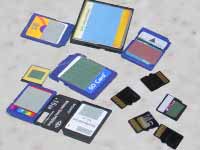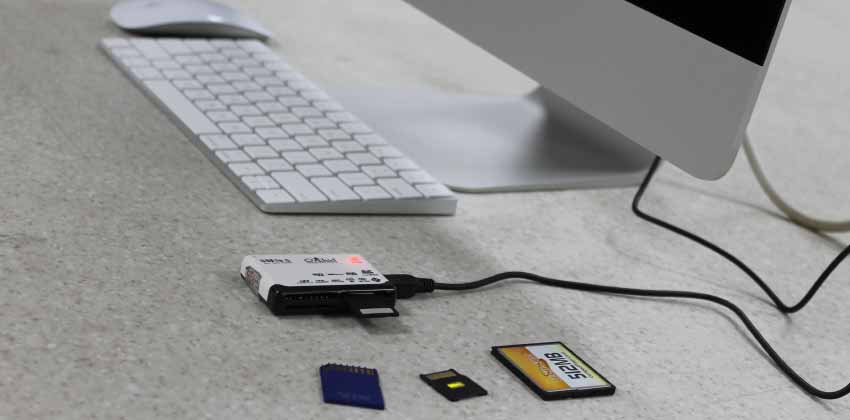Table of Contents
- Windows Data Recovery Software
- NTFS Data Recovery Software
- FAT Data Recovery Software
- Memory Card Data Recovery Software
- Choosing Memory Card Data Recovery Software Types
- Types Of Memory Card Data Recovery Software
- » Formatted Memory Card Data Recovery Software
- Video and Photo Memory Card Data Recovery Software
- iPod Data Recovery Software
- Zune Music Recovery Software
- File system for Windows/Mac
Posted By: Technogeek | Updated On: March 18, 2023
It is possible to recover data from a formatted memory card, but it is important to act quickly and follow the right steps to increase the chances of successful recovery. In this response, I will explain the process of recovering data from a formatted memory card in detail, including the various tools and techniques you can use.

- Step 1 Stop Using the Memory Card : If you have accidentally formatted your memory card, the first and most important step is to stop using the card. This is because continued use of the memory card can overwrite the existing data on the card, making it more difficult or even impossible to recover the lost data. Therefore, you should immediately stop using the memory card and avoid any further read or write operations.
- Step 2 Use a Data Recovery Software :
To recover data from a formatted memory card, you will need a data recovery software tool. There are many data recovery software programs available that are specifically designed to recover data from formatted memory cards. Some of the popular data recovery software tools include EaseUS Data Recovery, Recuva, Disk Drill, and Stellar Data Recovery.
These data recovery software programs work by scanning the formatted memory card for any recoverable data. They are designed to recover lost data from different file formats, including photos, videos, music, documents, and more. Once the software has identified the recoverable data, you can then preview and select the files that you want to recover.
- Step 3 Connect the Memory Card to the Computer :
The next step is to connect the formatted memory card to your computer. You can connect the memory card to your computer using a card reader or by connecting your camera or mobile device to your computer via a USB cable. Once the memory card is connected to your computer, you can start the data recovery process.
- Step 4 Scan the Formatted Memory Card :
Once the memory card is connected to your computer, you can start the data recovery software tool and scan the memory card. Most data recovery software tools have a simple and user-friendly interface, allowing you to easily scan the memory card for any recoverable data. You will need to select the memory card as the target device, choose the file formats that you want to recover, and then start the scan process.
The scanning process may take some time, depending on the size of the memory card.

First, it's important to understand what happens when you format a memory card. Formatting a memory card erases all of the data on it and creates a new file system. However, the data is not completely erased from the card; instead, the space previously occupied by the data is marked as available for use. This means that if you act quickly and stop using the card, it's possible to recover the data that was previously stored on it.
There are two main types of memory cards: SD cards and microSD cards. The recovery process is similar for both types, but the tools and techniques used may vary slightly.
- Step 1 Stop using the card : The first and most important step in recovering data from a formatted memory card is to stop using the card immediately. This means that you should not take any new photos or videos or save any new data to the card. The more you use the card, the more likely it is that the old data will be overwritten and lost forever.
- Step 2 Choose a data recovery tool : There are a number of data recovery tools available that can help you recover data from a formatted memory card. Some popular options include:
- Recuva:
This is a free data recovery tool that can recover files from hard drives, SD cards, and other storage devices.
- EaseUS Data Recovery Wizard:
This is a paid data recovery tool that offers a free trial version. It can recover data from a wide range of storage devices, including memory cards.
- Disk Drill:
This is a paid data recovery tool that offers a free trial version. It can recover data from a wide range of storage devices, including memory cards.
- Step 3 Connect the memory card to your computer : To recover data from a formatted memory card, you will need to connect the card to your computer. You can do this by inserting the card into a card reader and then plugging the card reader into your computer's USB port. If your computer has a built-in card reader, you can insert the card directly into the reader.
- Step 4 Scan the memory card : Once you have connected the memory card to your computer, you will need to scan it using your chosen data recovery tool. The scanning process can take some time, especially if the memory card is large or contains a lot of data.
-
Most data recovery tools offer two types of scan: a quick scan and a deep scan. A quick scan searches for recently deleted files and is faster than a deep scan. A deep scan searches for all recoverable files, including those that have been deleted for a longer period of time.
- Step 5 Preview and recover the data :
After the scanning process is complete, your data recovery tool will display a list of recoverable files. It's important to carefully review the list and select only the files you want to recover, as recovering too much data can slow down the recovery process and use up valuable storage space.
Most data recovery tools offer a preview feature, which allows you to preview the recoverable files before you actually recover them. This is useful if you need to verify that the files you want to recover are intact and in good condition.
Once you have selected the files you want to recover, you can save them to your computer's hard drive or to another storage device. It's important to save the recovered files to a different location than the formatted memory card to avoid overwriting any remaining data on the card.